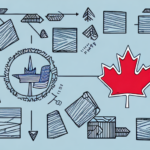Understanding UPS Not Previously Billed Ground Residential Charges
If you're a UPS customer who has recently noticed charges on your invoice for "Not Previously Billed Ground Residential Charges," you're not alone. UPS has begun charging certain ground residential customers who were not previously subject to these fees. In this article, we'll explore why this is happening, how UPS calculates these charges, and what you can do to manage them.
Why UPS Is Charging Ground Residential Customers
UPS is instituting charges for certain ground residential customers because these shipments incur higher operational costs. Factors such as location, volume, and frequency of shipments contribute to these elevated costs. To offset these expenses, UPS has implemented the Not Previously Billed Ground Residential Charge.
It is important to note that not all ground residential customers will be affected by this charge. UPS has conducted a thorough analysis of their customer base and has selectively applied these fees to those with higher service costs. Additionally, UPS is committed to transparent pricing and has made detailed information about this charge available on their website.
Customers concerned about these charges can reach out to UPS to discuss their options. UPS offers a variety of shipping solutions and may provide alternative services that better align with the customer's needs and budget. Overall, UPS remains dedicated to delivering high-quality service while ensuring the financial sustainability of their operations.
How UPS Calculates Charges for Ground Residential Deliveries
The Not Previously Billed Ground Residential Charge is determined by a combination of factors, including shipment volume, frequency, and distance. UPS employs a sophisticated algorithm to identify which customers are subject to these charges and to calculate the exact amount.
Zone is a critical factor in this calculation. Zones are determined by the distance between the shipment's origin and destination, categorized into eight regions across the United States. The further a package travels, the higher the zone, leading to increased shipping rates.
The weight of the package also significantly impacts the cost. Heavier packages require more resources for transportation and delivery, resulting in higher charges. Customers can utilize UPS's online shipping calculator to estimate costs based on weight and destination.
Additionally, UPS offers various discounts and promotions for frequent users. These can include reduced rates for high-volume shippers and special deals for businesses relying on UPS for all their shipping needs. For more details, customers can contact UPS directly or explore resources on their discounts page.
What You Need to Know About UPS Ground Residential Charges
If you are a UPS ground residential customer, it's essential to understand how these charges could impact your business. For some customers, these fees may represent a minor additional expense, while for others, they could significantly increase shipping costs, affecting overall profitability.
It's important to recognize that these charges might not be included in your initial shipping quote. Therefore, carefully reviewing invoices for any additional fees is crucial to avoid unexpected costs.
Moreover, UPS Ground Residential charges can vary based on the shipment's destination. Shipping to remote or rural areas, for example, may incur higher fees compared to urban locations. Incorporating these potential costs into your shipping strategy is vital for accurate budgeting.
UPS provides various tools and resources to help manage and reduce shipping costs. Utilizing their shipping calculator or enrolling in the UPS My Choice program for alerts and notifications can help you better understand and control your shipping expenses.
The Impact of UPS Ground Residential Charges on Your Business
The impact of these charges varies based on factors such as shipping volume, customer locations, and profit margins. For some businesses, the added expense may be manageable, while for others, it could make it challenging to compete with businesses not subject to these fees.
Passing these costs onto customers might also affect the perception of your business, potentially leading to decreased sales. It's essential to balance cost management with maintaining competitive pricing and customer satisfaction.
How to Reduce Your UPS Ground Residential Charges
If you're concerned about these fees, consider the following strategies to help reduce costs:
- Negotiate Better Rates: Engage with UPS to negotiate rates, especially if you can demonstrate a lower cost to serve through increased volume or frequency of shipments.
- Alternative Shipping Carriers: Evaluate other shipping carriers or services for some of your shipments. While this may not eliminate all UPS charges, it could offer cost savings and greater flexibility.
For more detailed strategies, refer to our guide on reducing UPS charges.
Hidden Costs in Your UPS Ground Residential Deliveries
Beyond the Not Previously Billed Ground Residential Charge, other hidden costs may apply to your UPS ground residential deliveries:
- Fuel Surcharges
- Residential Surcharges
- Address Correction Fees
- Additional Handling Fees
It's crucial to meticulously review invoices and shipping agreements to understand all potential fees. For more information on hidden costs, visit our Hidden UPS Costs resource.
Common Misconceptions About UPS Ground Residential Charges
Several misconceptions exist regarding UPS ground residential charges:
- Only Small Businesses or Residential Customers Are Affected: In reality, businesses of all sizes can be subject to these fees, particularly larger companies with higher shipping volumes.
- Charges Are Part of a Scam: These fees are legitimate and have been implemented by UPS to cover the higher costs of serving specific customer segments.
Understanding the true nature of these charges can help businesses better prepare and manage their shipping expenses.
The Legal and Regulatory Framework for UPS Ground Residential Charges
UPS ground residential charges operate within the legal and regulatory frameworks governing the shipping industry. This includes compliance with regulations from the Federal Motor Carrier Safety Administration (FMCSA) and the Department of Transportation (DOT). UPS must adhere to these regulations to ensure that their fees remain fair, transparent, and in line with industry standards.
For more details on the regulatory aspects, refer to the UPS Legal Framework.
Strategies for Negotiating Better UPS Ground Residential Rates
To negotiate more favorable rates with UPS, consider the following strategies:
- Data Collection: Gather comprehensive data on your shipping volume, destinations, and frequency to demonstrate a lower cost to serve.
- Third-Party Logistics Providers (3PLs): Collaborate with a 3PL that can negotiate better rates on your behalf. 3PLs often have established relationships with shipping carriers and can leverage the volume of their clients to secure discounts.
Implementing these strategies can lead to significant cost savings. For a comprehensive guide, explore our Negotiating UPS Rates article.
The Future of UPS Ground Residential Charges: Trends and Predictions
Predicting the future of UPS ground residential charges involves considering various external factors such as competition, fuel prices, and regulatory changes. It is likely that these charges will continue to be a concern for businesses relying on UPS for their shipping needs.
One notable trend is the growth of e-commerce and the increasing demand for residential deliveries. This surge may prompt UPS to further refine their fee structures, potentially introducing additional charges or modifying existing rates to accommodate the heightened demand.
Staying informed about these trends can help businesses anticipate changes and adjust their shipping strategies accordingly. For more insights, read our E-commerce Trends for 2024.
How to Analyze Your UPS Invoices for Possible Billing Errors
Regularly reviewing your UPS invoices is essential to identify potential billing errors. Common errors include:
- Incorrect Zone Charges
- Incorrect Shipment Weight
- Address Correction Fees for Correct Deliveries
If you identify any discrepancies, contact UPS immediately to resolve the issue and prevent overcharges. For a step-by-step guide on invoice analysis, visit our Analyze UPS Invoices section.
Understanding the Relationship Between UPS Ground Residential Charges and Fuel Surcharges
In addition to the Not Previously Billed Ground Residential Charge, UPS imposes fuel surcharges on certain shipments. These surcharges fluctuate based on the average price of fuel and are intended to help UPS cover their fuel expenses.
While fuel surcharges are separate from ground residential charges, they collectively impact your overall shipping costs. It's important to consider both when analyzing your invoices to gain a comprehensive understanding of your shipping expenses.
For more information on how fuel surcharges are calculated, refer to our UPS Fuel Surcharges guide.
The Pros and Cons of Using Alternative Shipping Options to Avoid UPS Ground Residential Charges
If UPS ground residential charges are a concern, you might consider alternative shipping options such as the USPS or FedEx.
While these alternatives may offer cost savings, they come with their own set of advantages and disadvantages:
- USPS
- Pros: Generally lower rates for lighter packages, extensive network for residential deliveries.
- Cons: Slower delivery times, less robust tracking options.
- FedEx
- Pros: Reliable and fast delivery services, comprehensive tracking.
- Cons: Higher rates for certain shipment types, especially heavy packages.
Before switching carriers, carefully evaluate these pros and cons to ensure they align with your business needs. For a detailed comparison, check out our Compare Shipping Carriers resource.
Case Studies: Examples of Businesses That Have Successfully Managed Their UPS Ground Residential Charges
Real-world examples can provide valuable insights into managing UPS ground residential charges effectively. Below are case studies of businesses that have successfully implemented strategies to reduce their UPS charges and enhance their shipping operations.
Example 1: Company A
Company A is a mid-sized online retailer shipping approximately 500 packages per week. Concerned about the impact of UPS ground residential charges on their bottom line, they collaborated with a 3PL to negotiate better rates. By leveraging their shipment volume, Company A reduced their UPS charges by 20%, resulting in significant cost savings over time.
Example 2: Company B
Company B is a small business specializing in handmade crafts, shipping a few packages weekly. Initially surprised by the Not Previously Billed Ground Residential Charge on their UPS invoice, they reviewed their invoices in detail and discovered opportunities to bundle shipments. This strategy allowed them to take advantage of lower shipping rates, reducing their UPS charges by 35%.
Conclusion
UPS ground residential charges can be a complex and confusing topic for businesses. However, by understanding how these charges are calculated, their potential impact on your business, and the strategies available to manage them, you can take control of your shipping costs and improve overall profitability. Stay informed, leverage available resources, and proactively engage with UPS to navigate these charges effectively.






















